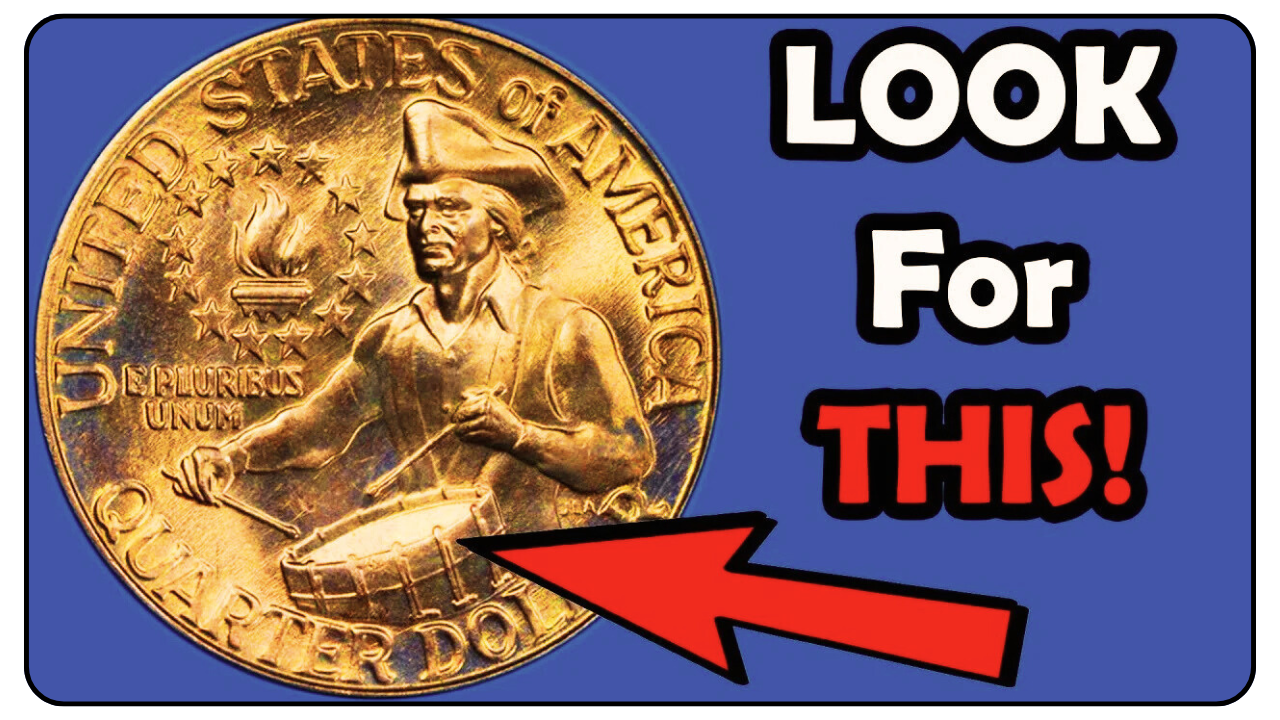1976 Quarter Could Be Worth $3 Million – In 1976, America threw a big party for its 200th birthday, and the U.S. Mint joined in by making a special coin called the Bicentennial Quarter. Most of these quarters are worth just 25 cents, but a few rare ones could make you a millionaire—some are said to be worth up to $3 million! These coins are still out there, maybe in your pocket, a coin jar, or even change from a store. This article will explain what makes these quarters so special, how to spot one, and what to do if you find a treasure. Let’s dive into this exciting hunt for a coin that could change your life.
Why the Bicentennial Quarter Is Special
The Bicentennial Quarter is easy to recognize. It has George Washington’s face on the front with the dates “1776-1976” to celebrate America’s 200 years of independence. The back shows a colonial drummer boy with a torch and 13 stars for the original 13 colonies. The U.S. Mint made over 1.6 billion of these coins in Philadelphia and Denver, plus smaller batches in San Francisco. Most are made of copper and nickel, but some rare ones from San Francisco are 40% silver, which makes them more valuable. The real jackpot, though, comes from coins with unique mistakes made during minting.
What Makes Some Quarters Worth Millions?
Certain Bicentennial Quarters are super valuable because of errors or special features. For example, a “double die error” happens when the coin’s design is stamped twice, making the words or date look blurry. Another error is an “off-center strike,” where the design is not lined up right, so part of the coin is blank. Some quarters were even made on the wrong metal, like silver instead of copper-nickel, or even a dime’s planchet. These mistakes are super rare, and collectors pay big money for them. One famous example is a 1976-D quarter missing its copper-nickel layer, showing a copper core, valued at up to $3 million.
How to Spot a Rare Bicentennial Quarter
You don’t need to be a coin expert to find a valuable quarter. Here’s a simple guide to check your coins:
- Look for the “1776-1976” date on the front and the drummer boy on the back.
- Check the mint mark near Washington’s neck: “S” (San Francisco) could mean it’s silver; “D” (Denver) or no mark (Philadelphia) are usually copper-nickel.
- Examine the edge: a solid silver edge (no copper stripe) means it might be a rare silver version.
- Use a magnifying glass to look for blurry letters, doubled images, or misaligned designs.
- Weigh the coin: silver quarters weigh about 5.75 grams; regular ones are 5.67 grams.
If you find a coin with these features, don’t clean it! Cleaning can lower its value. Store it in a soft cloth or plastic holder and take it to a professional grader like PCGS or NGC to check if it’s a treasure.
| Feature | Regular Quarter | Rare Silver Quarter |
|---|---|---|
| Weight | 5.67 grams | 5.75 grams |
| Edge | Copper stripe | Solid silver |
| Mint Mark | D or none | S (San Francisco) |
Where to Find These Valuable Coins
The exciting part? These rare quarters are still out there! You might find one in your spare change, a piggy bank, or even at a flea market. Some people have found valuable coins in vending machine change or old family collections. With America’s 250th anniversary coming up in 2026, interest in these coins is growing, and auction prices are soaring. For example, a 1976-S silver proof quarter sold for $19,200 at auction, and error coins can go for thousands or even millions.
What to Do If You Find a Rare Coin
If you think you’ve found a valuable Bicentennial Quarter, handle it carefully. Don’t rub or clean it, as that can hurt its value. Take it to a trusted coin dealer or grading service like PCGS or NGC to confirm its worth. If it’s a rare error coin or in perfect condition, you could sell it at an auction house or to a collector for a huge sum. Even if it’s not worth millions, it’s still a cool piece of American history. So, grab a magnifying glass, check your quarters, and you might just find a fortune hiding in plain sight!
